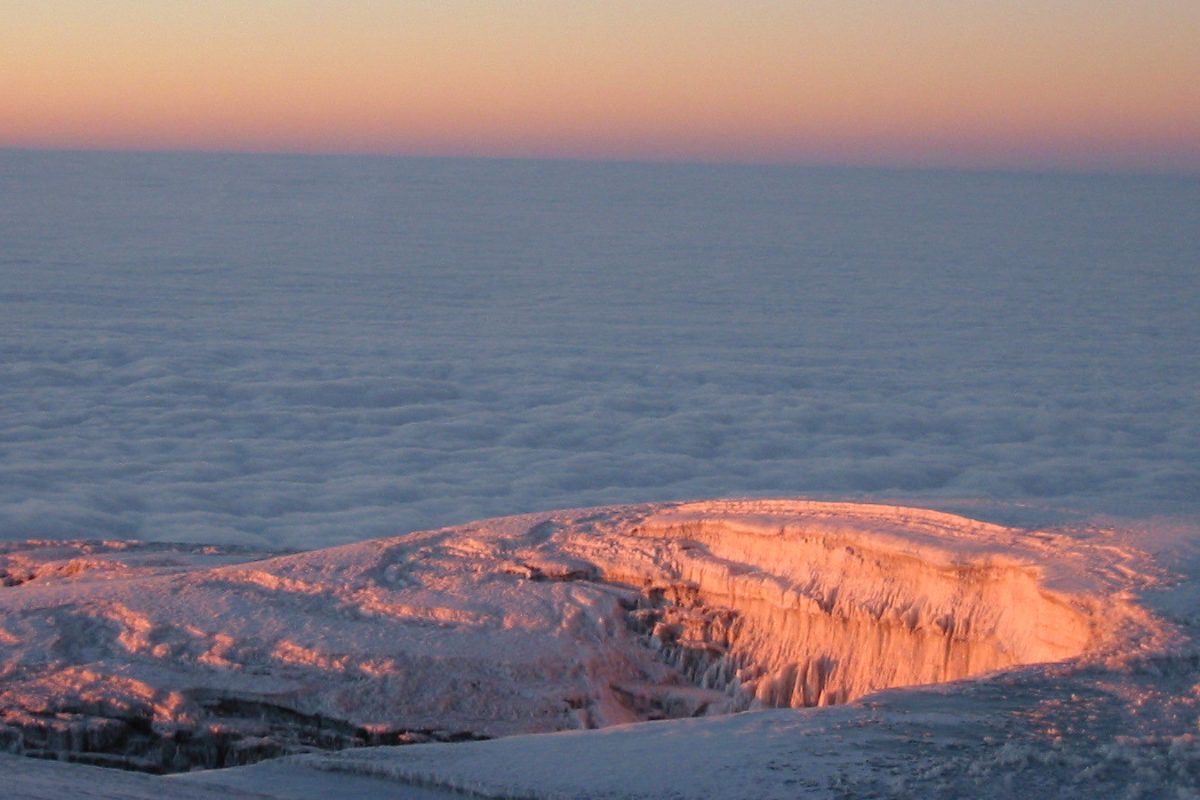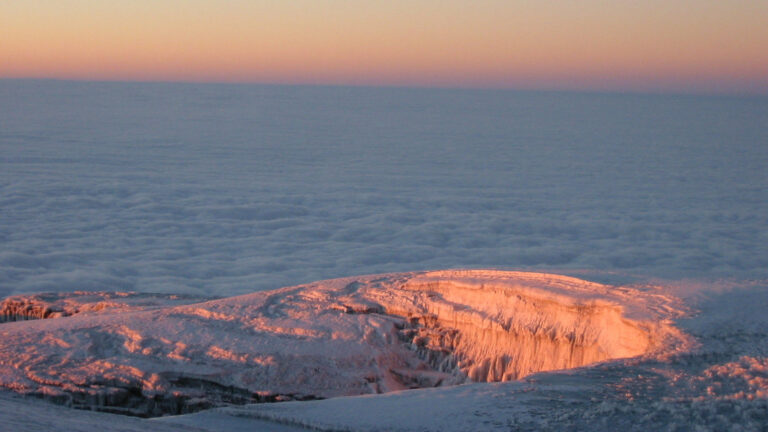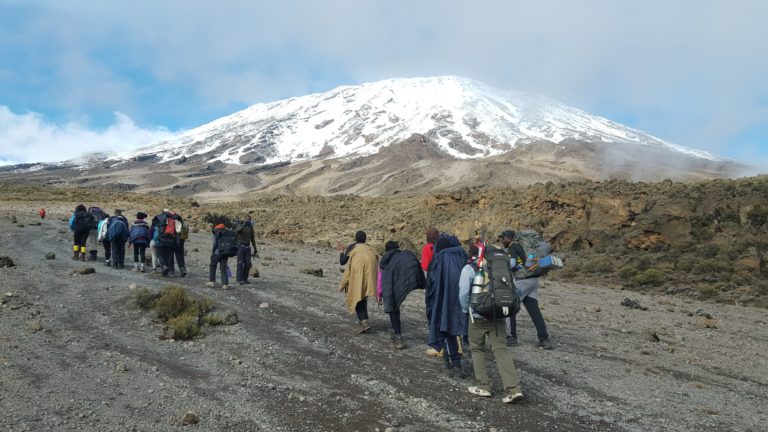Introduction
Located in the heart of Tanzania, Kilimanjaro is a monumental symbol of Africa’s geological and ecological diversity. The mountain is not only known for its towering presence as Africa’s highest peak, but also for its icy formations. The Kilimanjaro glaciers that cover the summit of the mountain are evidence of a cooler past and the earth’s climatic evolution. They embody the dynamic interplay between our planet’s geological activities and atmospheric conditions and offer invaluable insights into historical climate patterns and environmental changes.
The Glaciers of Kilimanjaro
The glaciers atop Kilimanjaro, particularly the renowned Furtwängler Glacier, are encapsulated in a realm of ethereal beauty. Poised at the summit, these glaciers present a stark and mesmerizing contrast to the arid savannahs that sprawl below. Beyond their visual splendor, these glaciers serve a pivotal ecological function, acting as natural reservoirs that capture and store water in its most pristine form. This hydrological role is crucial for the sustenance of the diverse flora and fauna that inhabit the mountain’s varying altitudes, as well as for the agricultural practices of the surrounding communities. The cyclical melting of these glaciers feeds into rivers and groundwater systems, thereby maintaining the ecological balance and supporting the livelihoods of countless people and animals.
The Threat Posed by Climate Change
The future of Kilimanjaro’s glaciers is becoming increasingly bleak due to climate change. Recent studies have uncovered a concerning pattern of fast-paced shrinkage of these glaciers, mainly attributed to the escalating temperatures from global warming. This swift decline endangers not just the glaciers themselves but also disrupts the complex ecological and water systems reliant on them. The vanishing of these ice formations risks erasing a piece of natural legacy and may set off a series of ecological and socio-economic repercussions for the surrounding area.
The Importance of Kilimanjaro Glaciers
The significance of Kilimanjaro’s glaciers transcends their immediate environmental roles; they are the lifeblood of the local communities. The meltwater from these glaciers is a critical source of freshwater, underpinning the domestic and agricultural water needs of the populations in the foothills. Furthermore, the glaciers are a cornerstone of the local tourism industry, attracting adventurers and nature enthusiasts from across the globe. This influx of visitors fosters economic growth and provides employment opportunities, thereby contributing to the socio-economic stability of the region. Thus, the conservation of these glaciers is intertwined with the sustenance of the local culture, economy, and biodiversity.
Experience the Magic of Kilimanjaro
The Tanzaniatrail guides will lead you through the landscapes of Kilimanjaro and give you an insight into the mountain’s unique ecosystem. They ensure that your trip is not only an unforgettable adventure, but also enriches your knowledge of nature. Every step on the paths of the mountain thus becomes an instructive stage on the way to a deeper understanding of our planet











